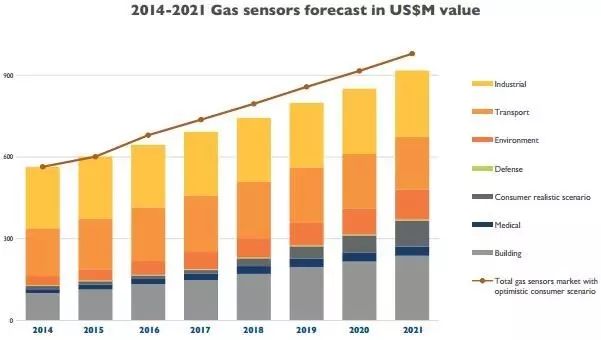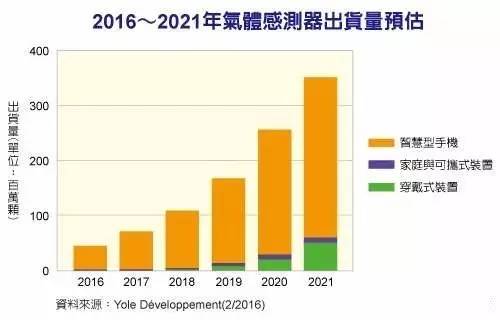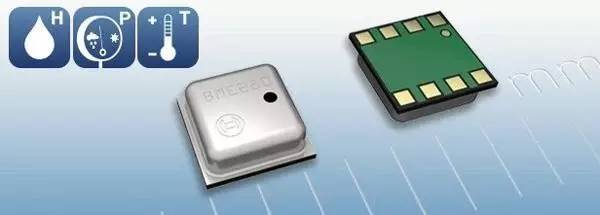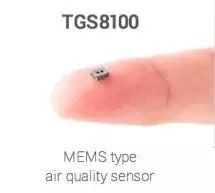Gas sensors are widely used in various fields of industry and life, such as petroleum, chemical, steel, metallurgy, mining, environmental protection, municipal, medical, food and many other fields. In recent years, with the rapid development of the Internet and the Internet of Things, the application of gas sensors in the emerging fields of smart homes, wearable devices, and smart mobile terminals has advanced by leaps and bounds, greatly expanding the application space, and the demand has also changed by orders of magnitude.
Wide range of gas sensor applications
Among the gas sensors currently in use, semiconductors, electrochemistry, catalytic combustion, and infrared are the main categories, and their working principles are different, and their functional characteristics have their own advantages.
The semiconductor gas sensor is widely used in a wide range of applications, such as household gas detection and smart home appliances. It is the most widely used gas sensor.
The electrochemical gas sensor is very suitable for the detection of low-concentration toxic gases, as well as the detection of non-toxic gases such as oxygen and alcohol. It is currently used in various industrial fields and road traffic safety testing;
Catalytic combustion gas sensor is suitable for flammable gas detection, mainly detecting gas use in coal mine field;
Infrared gas sensor is suitable for detecting methane, carbon dioxide and other gases. In the current practical application, carbon dioxide products are widely used and widely used. They are mainly used in HVAC and indoor air quality monitoring, industrial process and safety protection monitoring, agriculture and animal husbandry. Industry production process monitoring and other fields.
Environmental monitoring of gas sensors has become an urgent need for environmental protection
The increasing demand for environmental protection, coupled with the continuous development of sensor technology itself, is driving environmental monitoring to become one of the first highlights in the vertical field of the Internet of Things (IoT). Gas sensors, water environment detection sensors, and soil pollution detection sensors have become the "three cornerstones" for establishing environmental monitoring systems, and are increasingly valued by all sectors of society and the country.
Gas sensors, one of the “three cornerstonesâ€, create more opportunities in addition to other areas of environmental monitoring, such as industry, home, medical, and building. According to Yole Développement, the gas sensor market will cover a market value of US$ 920 million in 2021, with a compound annual growth rate of 7.3% over the next five years, with environmental monitoring ranking third in all applications.

Figure 1: Yole Développement's 2011-2021 Gas Sensor Market Revenue Forecast
MEMS gas sensors are growing faster in consumer applications
According to Yole Développement's analysis, gas sensors are likely to be the next best choice for integration in smartphones or wearables. Consumer applications are driving new gas sensors to reduce cost, power and size, especially with MEMS technology. The market size of gas sensors in consumer applications should increase from $12 million in 2015 to $95 million in 2021. If it is used on a large scale in new technologies, there will be an increase of $60 million. From 2015 to 2020, its compound growth rate exceeded 33%. This period of time, the gas sensor growth rate is expected to be the highest in history. All these signs indicate that the market for gas sensors has begun.
According to the latest report by market research firm Yole Developpement, the shipment of Gas Sensors in the consumer electronics market was only about 1.3 million in 2015. However, in the future, smart phones and wearable devices will be widely adopted. It is expected to break through 100 million mark in 2018 and jump to 350 million in 2021.

The trend of miniaturization, intelligence and multi-function of gas sensors
Like other sensors, the trend in gas sensors is also miniaturized, intelligent and multi-functional. The successful application of new material preparation technologies such as nanotechnology and thin film technology provides conditions for gas sensors to achieve new functions. The use of MEMS technology to help achieve sensor size miniaturization, and then the integration of multi-gas sensors to achieve multi-functionality. The integration of gas sensors and digital circuits will become an inevitable way to achieve intelligence. Miniaturized and intelligent gas sensors will become a new highlight in the activation market.
In response to this trend, international giants have introduced the BME280, a small, highly integrated gas sensor product, which is an environmental sensor that combines a gas sensor, a pressure sensor, a humidity sensor and a temperature sensor.

Bosch 4-in-1 environmental sensor: BME280
The BME280 gas sensor detects volatile organic compounds (VOCs) contained in paints, office equipment, cleaning supplies and furniture; the air pressure sensor measures height with an accuracy of ±1m and can be used for indoor floor inspection.
The sensor also monitors and manages indoor air quality by switching windows or by controlling air flow; monitoring personal health and providing recommendations for improving personal health; monitoring home automation and the environment; and obtaining customized weather forecasts
Although the product is equipped with four sensors, the dimensions are only 3 mm × 3 mm × 0.93 mm. The BME280 combines I2C and SPI communication interfaces. Equipped with three power modes and oversampling rates, this will make it easy for designers to apply the BME280 to different applications.
Mainstream manufacturer of gas sensors
Gas sensor manufacturers are mainly concentrated in Japan, Europe and the United States. Gas sensor related companies include British Urban Technology Corporation (the parent company is Honeywell), Japan Figaro, UK Alphasense, Dynament Technology.
Honeywell's subsidiary, British Urban Technology Corporation, started with electrochemistry and is involved in infrared and catalytic gas sensors. Its products include O2, CO2, NO, NO2 and other common gas sensors, including hydrogen cyanide, chlorine, and hydrazine. Gas sensor. City technology produces more than 1.5 million sensors per year and more than 200 product categories, producing sensors that detect 20 different gases.
The Figaro gas sensor product technology mainly includes semiconductor (MOS), electrochemical and catalytic combustion gas sensors, which are widely used in industrial, automotive, indoor air detection and scientific measurement. In addition to the traditional technology, Figaro also introduced the indoor air quality sensor TGS8100 with metal oxide type combined with MEMS technology. The sensor is the industry's smallest and lowest power indoor air sensor for air conditioners, air purifiers and exhaust fans.

Figaro combines MEMS technology gas sensor TGS8100
Alphasense is a gas sensor company based in the UK. Its main products are oxygen, toxic gases and flammable gas sensors. The company's sensor technology covers four major categories of electrochemistry, catalysis, optics and semiconductors.
Domestically, the main gas sensor companies include Yusheng Technology, Tianjin Figaro (Sino-Japanese joint venture), 718, Chongqing Coal Research Institute and Shanxi Tengxing. Among them, Yusheng Technology is currently the only company in China that can produce four types of gas sensors: semiconductors, catalytic combustion, electrochemical and infrared optics. It is the absolute leader of domestic gas sensors, accounting for 60-70% of sales. The detection gas species cover most flammable gases (methane, propane, hydrogen, etc.) and most toxic gases (carbon monoxide, hydrogen sulfide, benzene, etc.), and are widely used in industrial, mining, aerospace, civil, commercial and other fields.
Gas sensor manufacturer
1, ALPHASENSE (alpha)
Headquarters: United Kingdom
Main product areas: industrial gas detection, environmental monitoring, etc.
Official website:
2, AMPHENOL (Amphenol) (acquisition of general)
Headquarters: United States
Main product areas: Embedded Test Solutions
Official website:
3. AMS (APPLIED SENSOR)
Headquarters: Austria
Main product areas: high performance analog ICs and sensors
Official website:
4, BASELINE-MOCON
Headquarters: United States
Main product areas: gas sensor, monitoring equipment production research and development
Official website:
5, CAMBRIDGE CMOS SENSORS
Headquarters: Cambridge
Main product areas: ultra low power miniaturized gas sensor
Official website:
6. CITY TECHNOLOGY (City Technology (Honeywell))
Headquarters: United Kingdom
Main product areas: industrial safety systems and civil detection
Official website:
7, CLAIRAIR
Headquarters: United Kingdom
Main product areas: Non-dispersive infrared NDIR gas sensor
Official website:
8, Cubic Optoelectronics (Sifang Optoelectronics)
Headquarters: Wuhan
Main product areas: gas sensing technology, gas analysis equipment
Official website:
9, DOVELET (Daviley)
Headquarters: Shenzhen
Main product areas: semiconductor gas sensors
Official website:
10, DYNAMENT
Headquarters: United Kingdom
Main product areas: non-dispersive infrared principle miniature sensor
Official website:
11, ELT SENSOR
Headquarters: South Korea
Main product areas: NDIR sensors, air quality monitoring
Official website:
12, FIGARO (Fegaro Technical Research)
Headquarters: Japan
Main product areas: semiconductor gas sensors, modules, etc.
Official website:
13. FIS Corporation
Headquarters: Japan
Main product areas: semiconductor gas sensors, modules, etc.
Official website:
14, Golden Scientific (Gordon)
Headquarters: Japan
Main product areas: semiconductor gas sensors, modules, etc.
Official website:
15, GSS (Gas Sensing Solutions)
Headquarters: United Kingdom
Main product areas: leading carbon dioxide (CO2) sensors
Official website:
16, HONEYWELL (Honeywell)
Headquarters: United States
Main product areas: acquisition of Huarui Scientific Instruments
Official website: http://sensing.honeywell.com/
17. ION SCIENCE (British ion)
Headquarters: United Kingdom
Main product areas: PID / VOC sensor detection equipment
Official website:
18, IT Dr. Gambert GmbH
Headquarters: Germany
Main product areas: oxygen sensors
Official website:
19. KNC (Korea New Ceramics)
Headquarters: South Korea
Main product areas: semiconductor gas sensors
Official website:
20, KWJ Engineering
Headquarters: United States
Main product areas: Screen Printing Electrochemical Sensing (SPEC)
Official website:
21, MEMBRAPOR (Mambapa)
Headquarters: Switzerland
Main product areas: gas diffusion electrodes and electrochemical gases
Official website:
22, MICRONAS (micro-open semiconductor)
Headquarters: Switzerland
Main product areas: smart sensor solutions
Official website:
23, MOLsensor Gas Sensor
Main product areas: semiconductor gas sensors
Official website:
24, MURCO GAS DETECTION
Main product areas: Murco Gas Sensors (MGS)
Official website:
25, NEMOTO (basic special chemistry)
Headquarters: Japan
Main product areas: semiconductor gas sensors
Official website:
26. NENVITECH (Senster)
Headquarters: Italy
Main product areas: semiconductor gas sensors
Official website:
27. OST (Oriental System Tech)
Headquarters: Taiwan
Main product areas: NDIR gas sensors
Official website:
28. PEWATRON AG
Headquarters: Switzerland
Main product areas: gas sensors, sensor modules
Official website:
29, SENKO
Headquarters: South Korea
Main product areas: gas detectors, gas sensors
Official website:
30, SenseAir (Sen)
Headquarters: Sweden
Main product areas: infrared gas sensors
Official website:
31. SENSIRION (ç››æ€é”)
Headquarters: Switzerland
Main product areas: SGPC10 multi-pixel gas sensor
Official website:
32, SGX Sensortech (formerly E2V)
Headquarters: United Kingdom
Main product areas: leading gas sensors and detection technology
Official website:
33, SmartGas
Headquarters: Germany
Main product areas: micro infrared gas, SF6 sensor
Official website:
34, SOLIDSENS (Speedy (Honeywell))
Headquarters: Germany
Main product areas: solid state electrochemical sensors
Official website:
35, Southland Sensing
Headquarters: United States
Main product areas: oxygen sensors, analyzers
Official website:
36. SUSA TECHNOLOGY
Headquarters: United Kingdom
Main product areas: semiconductor gas sensors
Official website:
37, SYNKERA
Main product areas: SMT package gas sensor
Official website:
38, UST Umweltsensortechnik (Uster)
Headquarters: Germany
Main product areas: gas sensors, temperature sensors
Official website:
39, WINSEN (炜盛科技)
Headquarters: Zhengzhou
Main product areas: Gas sensor application solutions
Official website:
40, SHARP (Sharp)
Headquarters: Japan
Main product areas: PM2.5 dust sensor
Official website:
With the development of the Internet of Things, the demand for sensors in the market will inevitably increase, but the technical performance requirements will also increase. Looking forward to the development prospects of gas sensors, an increasingly diverse application will create a larger market size.
Universal Back Sticker, Back Film, TPU Back Sticker, Back Skin Sticker, PVC Back Sticker, Back Skin,Custom Phone Sticke,Custom Phone Skin,Phone Back Sticker
Shenzhen Jianjiantong Technology Co., Ltd. , https://www.tpuprotector.com